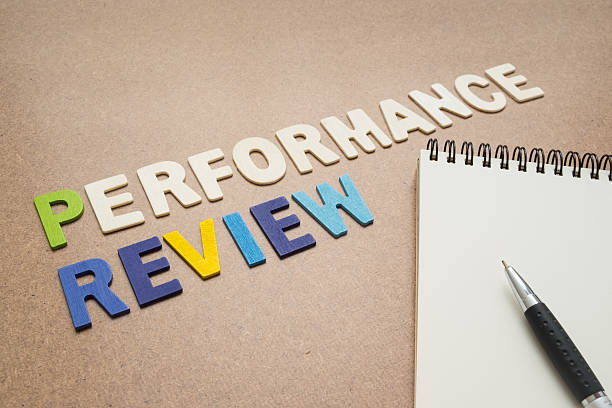- Is The Lack of Career Growth Losing You Valuable Hires? - November 20, 2025
- Innovative Resume Ideas to Help You Stand Out - May 8, 2025
- How to Create an ATS Career Page That Converts: Tips & Tools - April 29, 2025
The world of work is changing. Many organizations have turned to contract-based, contingent, and gig workers for multiple roles in their routine operations. Last year, the US saw nearly 64 million freelancers, which made up 38% of the workforce. These large-scale shifts in the workforce led to many newfound talent management considerations from an employer’s perspective. So, performance reviews are now more important than ever.
Part-time and gig workers take a different career approach than regular full-timers. These hires often would have accrued industry experiences from diverse collaborations. Therefore, hiring gig workers also requires patience and understanding. These candidates may be juggling multiple projects simultaneously.
We look at how these workplace dynamics affect the concept and significance of performance reviews. Perhaps more importantly, we’ll find ways to enhance existing talent assessment practices for the modern workforce.
Unpacking Performance Reviews

Performance reviews, or appraisals, are routine assessments of your workforce’s professional conduct and performance. So, these timely reviews can help determine promotions, salary evaluations, redeployment, and training programs. Decision-makers traditionally relied on performance reviews to identify the company’s top performers by systematically evaluating their hard work.
However, contrary to the original intended purposes of these reviews, employees have associated performance reviews with negative experiences.
These concerns include:
- Companies usually conduct annual reviews or have them bi-yearly in other instances. The long gaps between each assessment period could lead to inaccurate employee ratings. Long breaks between yearly reviews make it hard for bosses to improve training and talent.
- Decision-makers and people managers may include inherent biases in their reviews. And this could shortchange qualified individuals while acknowledging and rewarding others who lack the right competencies to excel in their roles.
- The “crunch period” toward performance periods could lead to stress and performance anxiety. And this could either motivate employees or discourage them. Either way, the transitory distress could lead to inaccurate estimations of regular workplace performance.
- Preset performance assessment criteria could involve unrealistic targets that demotivate and disengage the workforce. For example, Google revised its performance appraisal policy, anticipating a larger group of employees (2% up to 6% of the workforce) falling into a low-ranking category that warrants corrective action. These could cause large-scale fear and concerns over job security.
Aside from the points listed above, traditional performance reviews are not the best way to manage the latest hiring trends – the rise of part-time, gig, and contingent talent.
Ad-hoc hires are becoming increasingly essential in modern organizations that prioritize flexibility. These external employees stay with a company for short periods based on project duration.
In these cases, managers don’t have enough time to watch, review, and reward performances as they do in regular performance reviews. But, it’s really helpful in a tough job market to keep an eye on and rehire part-time workers who did really well before.
Modern decision-makers can improve talent management by reevaluating performance reviews altogether. So, it’s time to switch to a dynamic, results-focused way of doing appraisals that fits with how quickly employees move in a flexible workforce.
Redefining Performance Reviews
A renewed look at performance reviews requires decision-makers and talent managers to dissect appraisals and reconsider their significance in employee engagement. To improve talent management, companies must select the best parts of traditional performance reviews and use them for both permanent and temporary hires.
Prioritize Employee Recognition Through Performance Reviews
Recognition is a major catalyst for boosting employee satisfaction, engagement, and performance. Companies should incorporate employee recognition into a modern performance review approach.
Organizations can apply the same practice for contingent and gig workers. Do this by publicizing positive performance reviews that can help improve their professional reputation.
Your company can gain lasting trust and appreciation from a contingent workforce by ensuring they feel included with the rest of the team during assessments.
In addition, recognition is critical for boosting employee morale regardless of their stay with your organization. So, invite gig and contingent workers to every significant group meeting that openly discusses teamwork assessments and involves them in the conversation.
Seek Feedback
Effective performance reviews ultimately involve communication between hires and employers. Every healthy and productive dialogue should involve a two-way conversation, including performance reviews.
As such, we must reframe the outdated concept of providing team members with a lengthy and absolute description (essentially a monologue) of their strengths and areas for improvement.
A healthy feedback loop between appraisers and employees avoids misunderstandings. It also provides a transparent channel for addressing issues and concerns on the spot. A Gallup research revealed that managers who offer frequent and continuous feedback empower employees to feel 3.2x more motivated to achieve outstanding performance. They’re also 2.7x more likely to stay engaged at the workplace.
Spontaneous dialogues can make work better by clearing up what everyone expects and thinks about reaching the same goals. Instead of just checking at the end of the year, having lots of reviews shows what’s happening right away so teams can fix problems faster.
Talent managers can apply the same feedback process to gig and contingent workers by asking strategic questions to understand their work experience better.
For instance, you could request team members to share the details of a specific win during their time with your company, situations where things could have improved, and suggest solutions.
These insightful and empathetic performance evaluations can help your company build rapport and identify whether an ad-hoc hire fits the culture. The strategic measure in your performance review can help you decide about rehiring external teams for future collaborations.

Implement Performance Management Software
Quality performance management software can help scale your company’s appraisal practices according to the demands and changes of your workforce. These intuitive programs provide a data-based approach that consistently and reliably tracks the performance of every team member.
These versatile solutions make it highly convenient to scale your performance review process to accommodate part-time and contingent workers as needed.
Despite these software’s user-friendly efficiencies, 58% of companies rely on manual monitoring methods like spreadsheets to track employee performance. These logs need more real-time accuracies to keep up with the swift talent changes in gig and part-time employee assessments.
Using automated performance programs instead of manual logs can catch mistakes and make evaluations more accurate. These smart software tools help match employee assessments with company goals, leading to better results.
Smart performance software often uses AI to spot language patterns and remove biases in employee assessments. So, this helps make sure everyone gets fair chances for development and keeps improving your team.
Good performance software helps set goals and makes jobs more meaningful, keeping employees engaged. It also gives continuous feedback based on company data, helping make plans to improve performance.
According to Doug Dennerline, CEO of Betterworks:
“Generative AI will be able to use data to write an unbiased and comprehensive performance review based on an employee’s entire body of work for the review cycle.”
Talent managers can expedite and streamline the review process with generated content and focus on having quality strategic discussions with employees based on objective reports.
Performance Management as a Part of a Larger Workforce Shift
So, back to the main question. Are performance reviews necessary? The short answer is yes. Clear and honest communication are pillars of a successful workplace, and performance reviews serve as reliable roadmaps to guide talent in their quest for career excellence.
But then comes the rub in a second related, and perhaps more important question. Are performance reviews outdated? The answer hinges on the state of the workforce.
Companies are hiring less conventional candidates en masse, often in brief windows. These fleeting employment periods do not provide the luxury for a detailed SWOT analysis of a person’s character.
A proactive performance review process is vital in keeping up with these rapid talent switches to continue providing quality feedback that optimizes every contribution. And then there’s a bigger consideration.
But Wait, There’s More
Proactive performance reviews make sure everyone gets recognized, and they’re part of making workplaces more data-driven. Using tech to improve hiring could become the norm as work changes.
Ongig’s versatile Text Analyzer platform scans JDs at scale to ensure your company uses the most impactful and non-biased language to attract suitable hires. Talent managers can confidently rely on Text Analyzer to cost-effectively address the needs of targeted candidate demographics. These include gig and contingent candidates.
An efficient talent acquisition system contributes to the success of your organization’s overall performance management. By objectively hiring top talent based on merit and experience, your company can seamlessly navigate performance management for full-timers and ad-hoc hires.
The enhanced teamwork and interpersonal understanding could boost career development prospects for hires and propel your company as an industry leader during the most challenging economic and market conditions.
Why I Wrote This?
Ongig helps eliminate biased and dull JDs with our Text Analyzer’s AI-supported technology. These help your organization attract and retain the most qualified talent based on professional credentials and performance. We believe a strategic combination of inclusive JDs and updated talent assessment practices can optimize organizational performance across the most volatile job market conditions. Request a demo of Ongig’s Text Analyzer to learn more.
Shout-Outs:
- emPerform – How Performance Management Can Increase Company Success
- CNBC – Google tells employees more of them will be at risk for low-performance ratings next year, by Jennifer Elias
- LinkedIn Talent Blog – 5 Recruiting Predictions for 2024 (Spoiler: Get Thinking About All Things Salary), by Tamara E.Holmes
- Gallup – More Harm Than Good: The Truth About Performance Reviews, by Robert Sutton and Ben Wigert
- Harvard Business Review – How to Conduct a Great Performance Review, by Frank V.Cespedes,
- Betterworks – The Pivotal Role of AI in Performance Management, by Alex Larralde
- LinkedIn – Rethinking Performance Reviews: Embracing Real-Time Feedback and Outcome-Based Evaluation, by Sally Dillon
